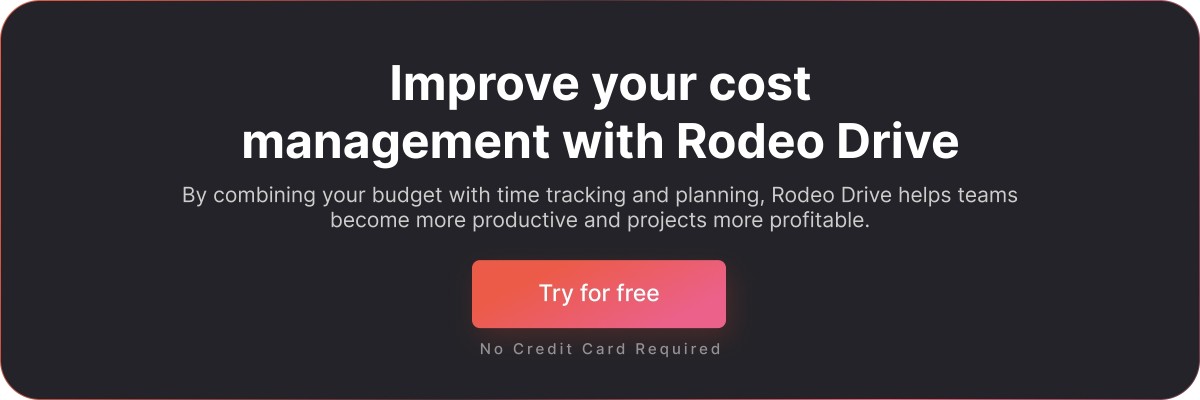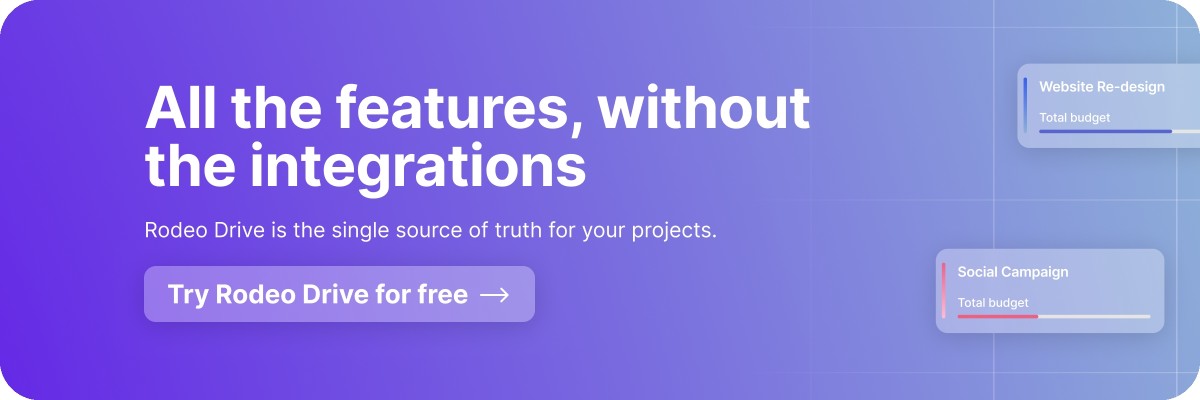Project Cost Management: Everything You Need to Know
Properly managing project costs is a critical project management skill. In fact, cost management, scope/quality management, and time management are the three functions at the core of project management, according to the Project Management Institute.
That said, not every project manager has the skills to properly build a project budget and make sure their team sticks to it. After all, it’s no small task.
If this sounds like you – don’t worry. We’re here to help. In this article, we’ll give you a rundown on project cost management, its benefits and challenges, and some best practices for implementation.
Let’s get into it!
What is project cost management?
Project cost management involves estimating, budgeting, and controlling the financial requirements of a project. The idea is that by having a clear understanding of what your project activities should cost, you’ll reduce the likelihood of your project going over budget.
This is an ongoing process that beings during the planning phase and requires constant monitoring throughout the entire duration of the project life cycle as new costs arise. Should your project start to go over budget, having a project cost management process will help you become aware of the issue that’s causing you to overspend and rectify it as quickly as possible.
Also read: The Project Management Checklist: 12 Steps to Follow
Benefits and challenges of project cost management
While project cost management is an important part of properly keeping your budget on track, it’s not always an easy process. Let’s take a look at the benefits and challenges of cost management.
Benefits of cost management
There are numerous benefits to keeping an eye on your project costs. Here are a few examples:
Helps with planning future projects
After your project ends, you’ll be able to examine how your estimated project costs compare to your actual expenses, allowing you to plan more accurately in the future.
Mitigates risks
Unforeseen project circumstances have the power to derail your project budget. But with proper cost management, your budget will include a buffer or contingency fund that will help you prepare for the unexpected. And because cost management includes continuous monitoring, it will help you identify risks to your project right away.
Prevents overspending
Without a thoughtful project budget, it’s easy to overspend on various project activities. That’s why proper cost management in the planning phase of your project is essential.
Improves project tracking
The status of your project budget is likely a key concern for clients and stakeholders. After all, they’re the ones paying for the project, and they want to ensure every dollar is well spent. With cost management, you’ll be able to provide them with better updates on how your budget is progressing along the way.
![]()
Challenges of cost management
While cost management is beneficial when correctly executed, not every team finds it easy to implement. Here are a few of the challenges of project cost management that teams new to it might experience:
Difficult to create accurate estimations
The monitoring side of project cost management relies on your estimations as a baseline of where your project progress should be. Therefore, should the project manager lack the necessary experience to create an achievable budget estimate, it will be difficult to stick to it.
Resource roadblocks
Completing your project efficiently and effectively requires resources. Should your budget be too small to acquire the necessary resources – or if circumstances beyond your control interfere with your ability to acquire resources – properly executing your budget estimate may be a challenge.

Lack of proper software tools
Managing your project costs using spreadsheets or simple pen and paper will certainly prove to be a headache. Utilizing a project management software tool with robust budgeting and reporting features like Rodeo Drive will make it significantly easier to oversee your spending.
The 4 elements of cost management in project management
When building your cost management plan, there are a few things you’ll want to consider and include a section on within your plan. Those 4 elements include:
- Resource planning
- Cost estimating
- Cost budgeting
- Cost control
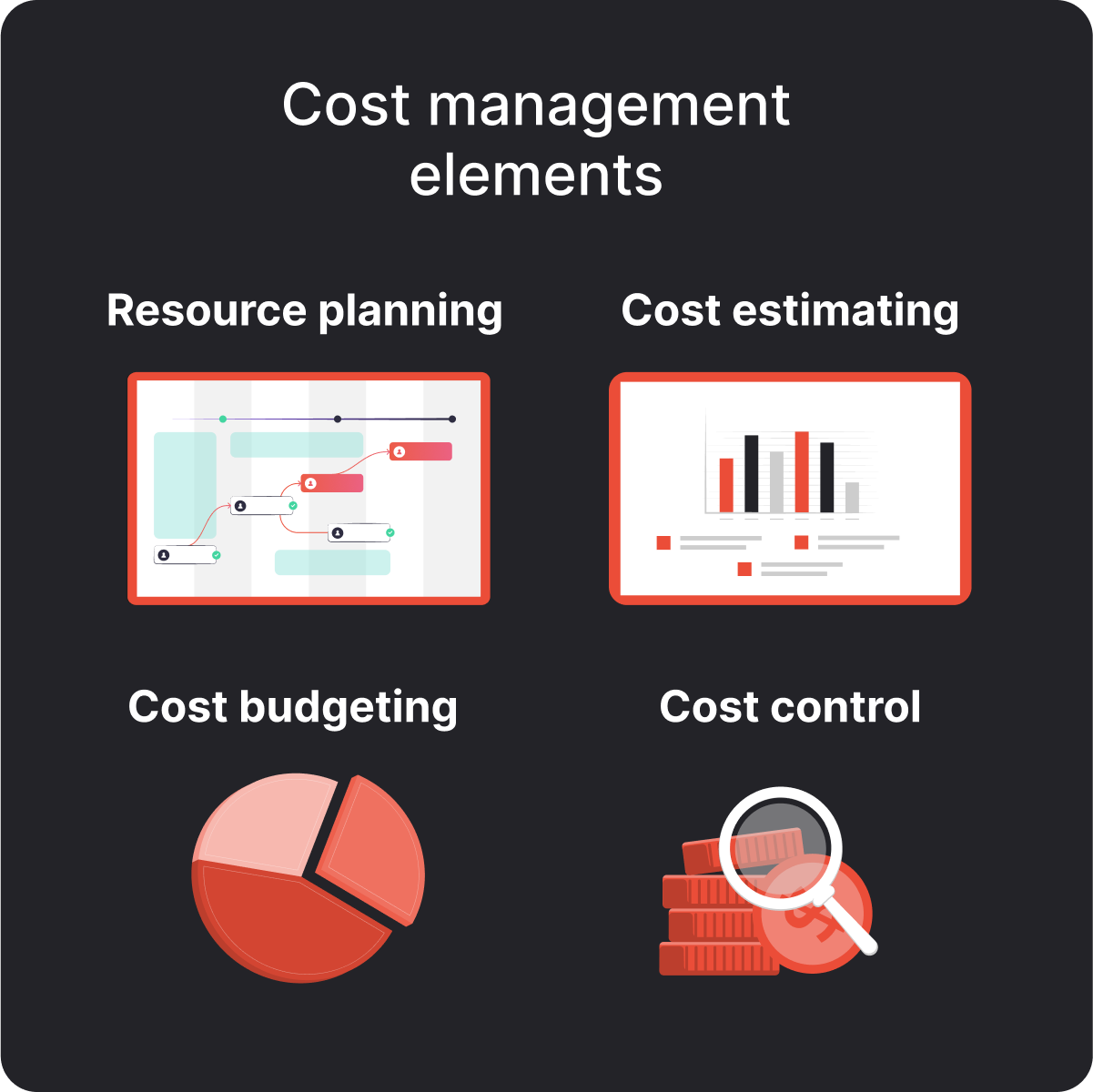
Resource planning
First things first – you’ll need to identify every resource you’ll need to complete the project before you get started. To do this, you must define your project scope, which will dictate which project activities are necessary to accomplish your project objectives.
Either the cost manager or the project manager should lead the way during the resource planning stage. It’s wise to ask your team members what resources they will need to complete their portion of the project. “Resources” can include anything necessary to complete the project, including equipment, your team’s time, tools, and money.
While this step should certainly occur during the project planning process, it will be much easier to do so once your project objectives are defined, your timeline is complete, and your scope statement has been finalized. If you’ve completed other similar projects, looking at the resources required for those can be beneficial.
Cost estimating
The cost estimation stage involves developing approximations for the costs necessary to acquire the resources the project requires for success. Because this still happens during the planning phase, teams can explore the costs of several different project solutions before landing on one to proceed with – a key reason why your estimate must be accurate.
When estimating the cost of physical materials, quotes from the seller are the best way to ensure an accurate estimate. If you’re outsourcing any part of your project labor, getting a few different quotes from potential contractors is crucial to ensure your expectations are in line with the market rate.
Because these prices are just estimates, adding a cushion to your estimate is critical. In the project management space, it’s typical to add a buffer of 5-10% of your total project budget to serve as a contingency fund to cover unexpected project costs or price changes. Relying on historical data from past projects that are similar in scope can be another useful resource to improve the accuracy of your estimate and ensure your buffer is large enough.
Some find cost estimation to be the most challenging step of the project cost management process due to the importance of compiling accurate estimates. If your estimate greatly differs from your actual project costs, there’s a greater chance that your project will fail because of resource misallocation.
Cost budgeting
Once you’ve gathered estimates for how much your project activities will cost, you’ll be able to move onto the budgeting stage. Your project budget will include all of your project costs as well as your contingency fund.
There are a number of different budgeting methods you can use to formulate your budget – including the analogous, top-down, or bottom-up approaches.
While you’re able to explore the costs of several different project solutions during the estimation stage, the budget you create in this phase will be much more set in stone. Once your client or stakeholders approve your project budget, you’ll have the go-ahead to begin working on it. This means you should assume the budget you create during this stage will be final.
Cost control
Cost controls are a subset of project controls wherein a cost manager records costs as the project progresses and notifies the project manager or stakeholders when the project team is overspending or when other financial issues arise.
The cost manager is constantly looking at the project data and identifying how the project’s actual budget numbers compare to the baseline expectation outlined in the budget. This also involves watching out for scope creep and scope changes, as expanding the scope of the project can rapidly increase your project spending.
If an issue is identified during the cost control process, an appropriate way to course correct might be to ask the stakeholders to increase the budget or cut down on the project scope to complete the project within the agreed-upon budget.
While cost control is an ongoing process, every team has a different preference on how often the budget progress should be reviewed. Some teams do so monthly, whereas others might check in quarterly – particularly for longer projects.
Project cost management best practices
While the four elements of the project cost management process are important, there’s a bit more to it than that. Here are a handful of other tips to follow when managing your project costs and budget.
Appoint a cost manager
While project managers might be able to also fill the role of cost manager, designating a separate team member as the cost manager is a good way to ensure your budget gets the attention it requires.
This person would be responsible for ensuring all expenses are recorded and that the actual project costs are in line with the expectations laid out in the project budget. If spending is above what it should be, the cost manager is in charge of alerting the project manager and helping to devise a solution.
Related: Project Administration: A Crucial Part of Project Management
Create a plan for managing risks ahead of time
A risk management plan is an incredibly necessary part of project planning. Risk management typically involves identifying any and all risks to your project, the likelihood of those risks occurring, how to mitigate those risks, and which team member will monitor each.
From a cost management perspective, many risks have financial repercussions, making it even more crucial to anticipate what might happen, should they occur.
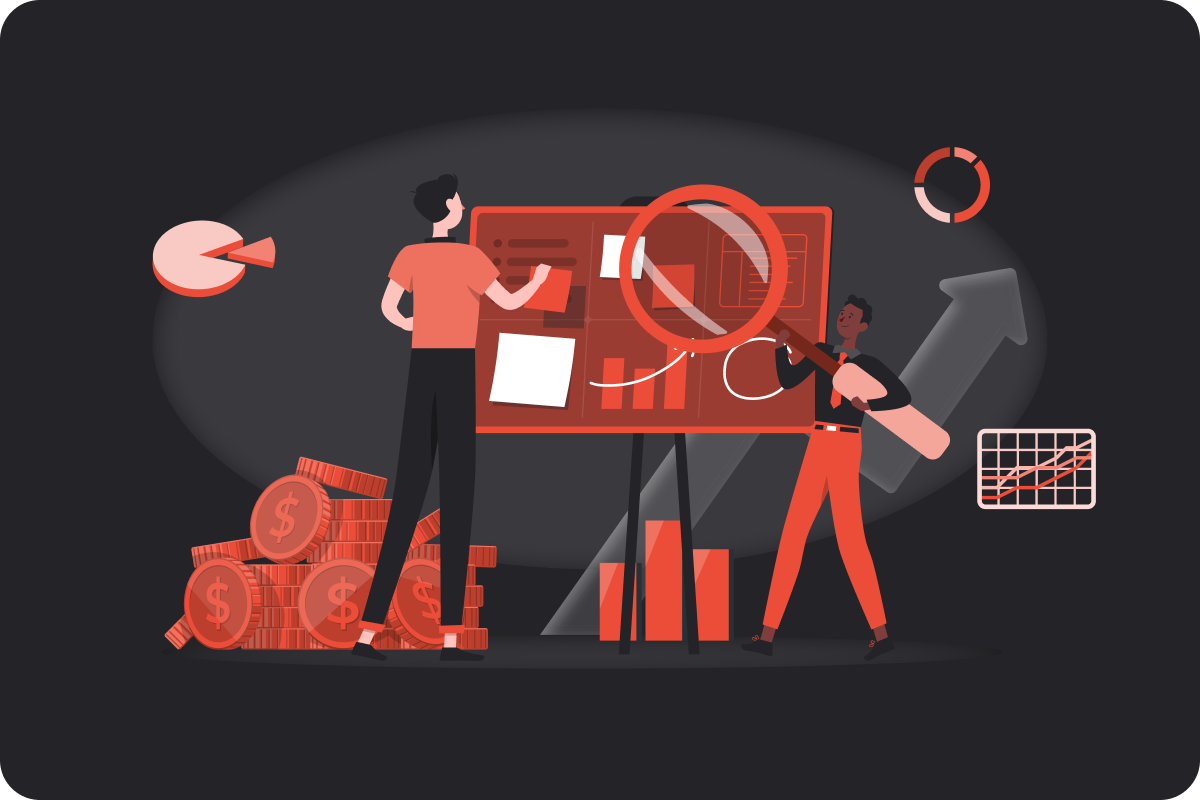
Track your costs as you incur them
How can you ensure you’re on track to deliver your project within budget if you don’t record your expenses as soon as they’re incurred? Failure to do so will leave you without a clear understanding of how much of your budget you’ve spent and how much you have left to spend.
Related: Time Tracking Best Practices & Tips According to Experts
Implement project management software
We’ve already covered why it’s important to track costs as they occur. That said, tracking them manually can be a massive pain, and such a method is vulnerable to human error.

The most efficient way to track your budget spending is by enlisting the help of a project management software solution. Many tools – such as Rodeo Drive – automatically update your budget as you record time and enter expenses, meaning you can easily visualize what percentage of your budget you’ve already spent vs. how much you have left.
Don’t forget to spend time on post-project cost accounting
Once you’ve wrapped up the project, don’t forget to take the time to evaluate how well you were able to stick to your project budget, and how much you deviated from it. This can be done numerically by calculating your project cost variance, which follows this formula:
Budgeted Cost – Actual Cost = Cost Variance
If your cost variance is positive, that means your project came in under budget, and a negative cost variance means you overspent. Both outcomes can still leave you with valuable insights.
For instance, even though your goal is to spend exactly what you budgeted (or slightly under it), spending too little of your budget means your estimation process was inaccurate. On the flip side, overspending means you failed to account for all the resources you needed.
In both scenarios, you should conduct a “post-mortem” meeting – in other words, a meeting that occurs after the project concludes – to examine why your budget was off and how you can improve for next time.
Managing project budgets in real-time with Rodeo Drive
Rodeo Drive is an all-in-one project management tool with an intuitive interface and robust feature offerings, including detailed phase-based budgeting, reporting, and time tracking.
When you create a new project in Rodeo Drive, you’ll first be prompted to build a budget. Once you’ve entered your estimations for how long each task will take and what it will cost, you can export that budget as an estimate for your client to approve. Once they’ve done so, you’ll be able to begin tracking time toward that project.
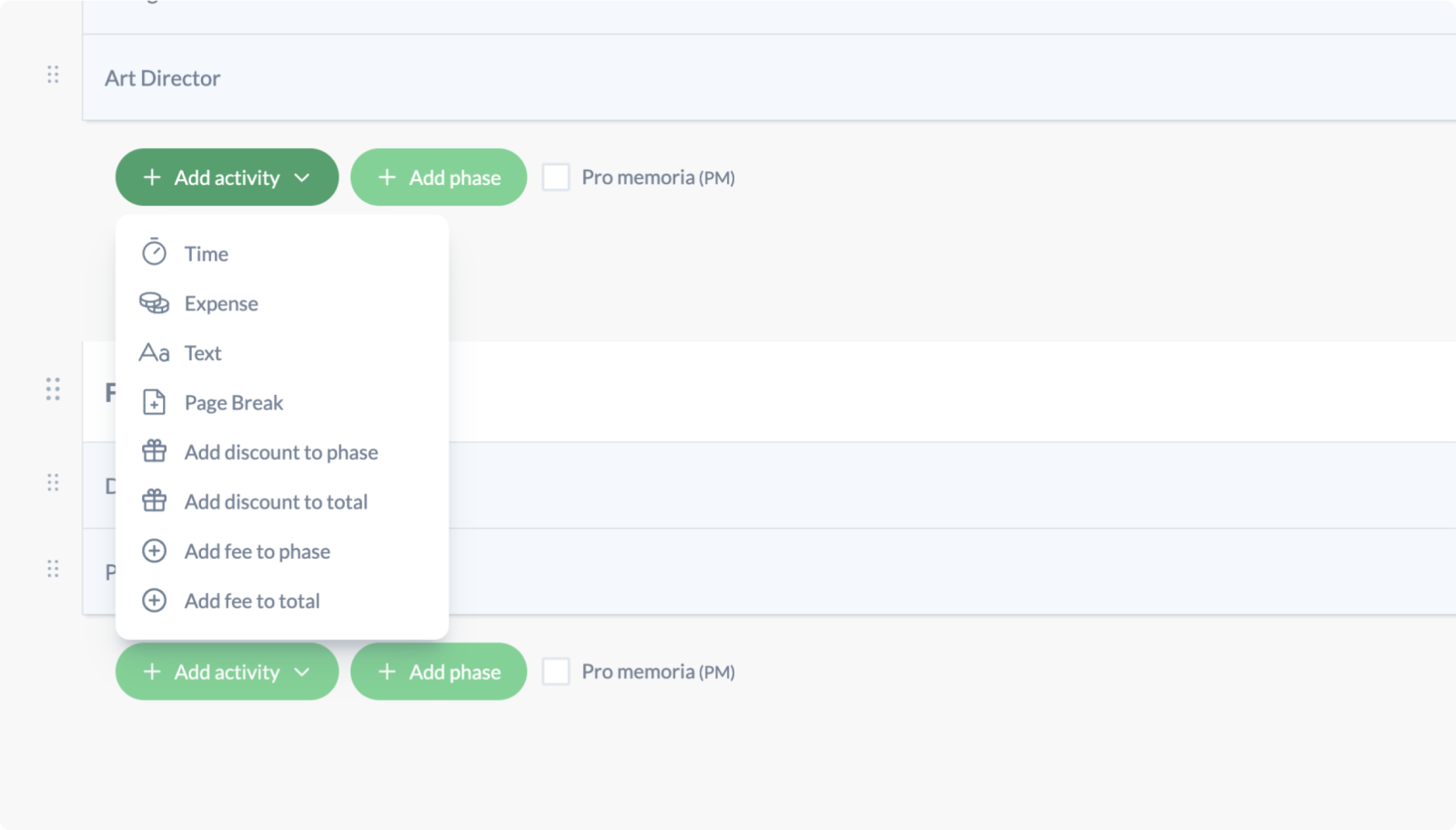
The best part is, that all of Rodeo Drive’s features are interconnected, meaning your budget and reports will update in real-time as you track your time and enter your expenses. Once you’ve recorded time in the platform, you can invoice clients via QuickBooks (US) or Xero (UK).
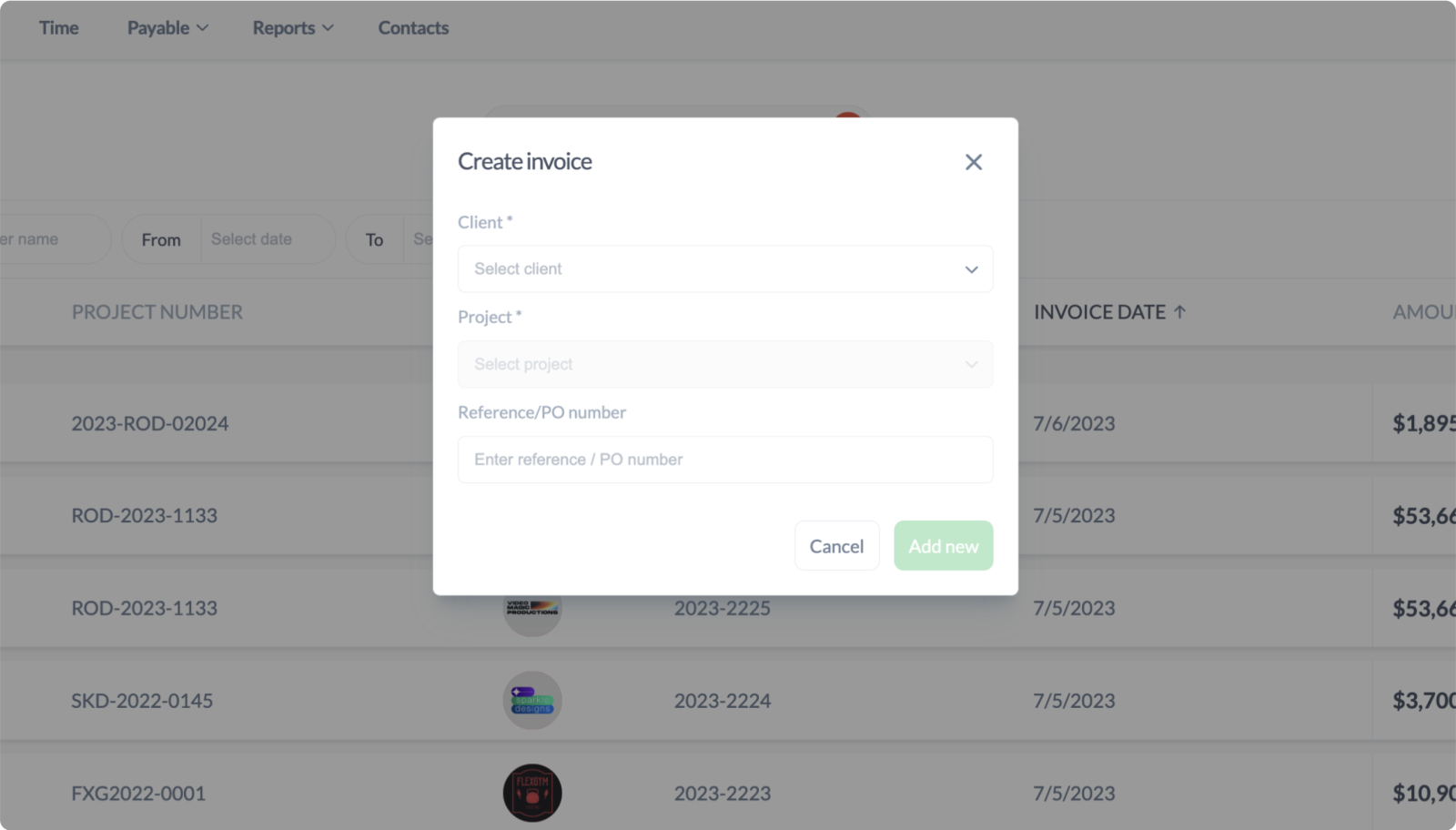
Rodeo Drive's reports are another highly useful feature, as you’ll be able to access insights on productivity, time registration, and financial data of your projects. These insights can help you create better budgets for next time.
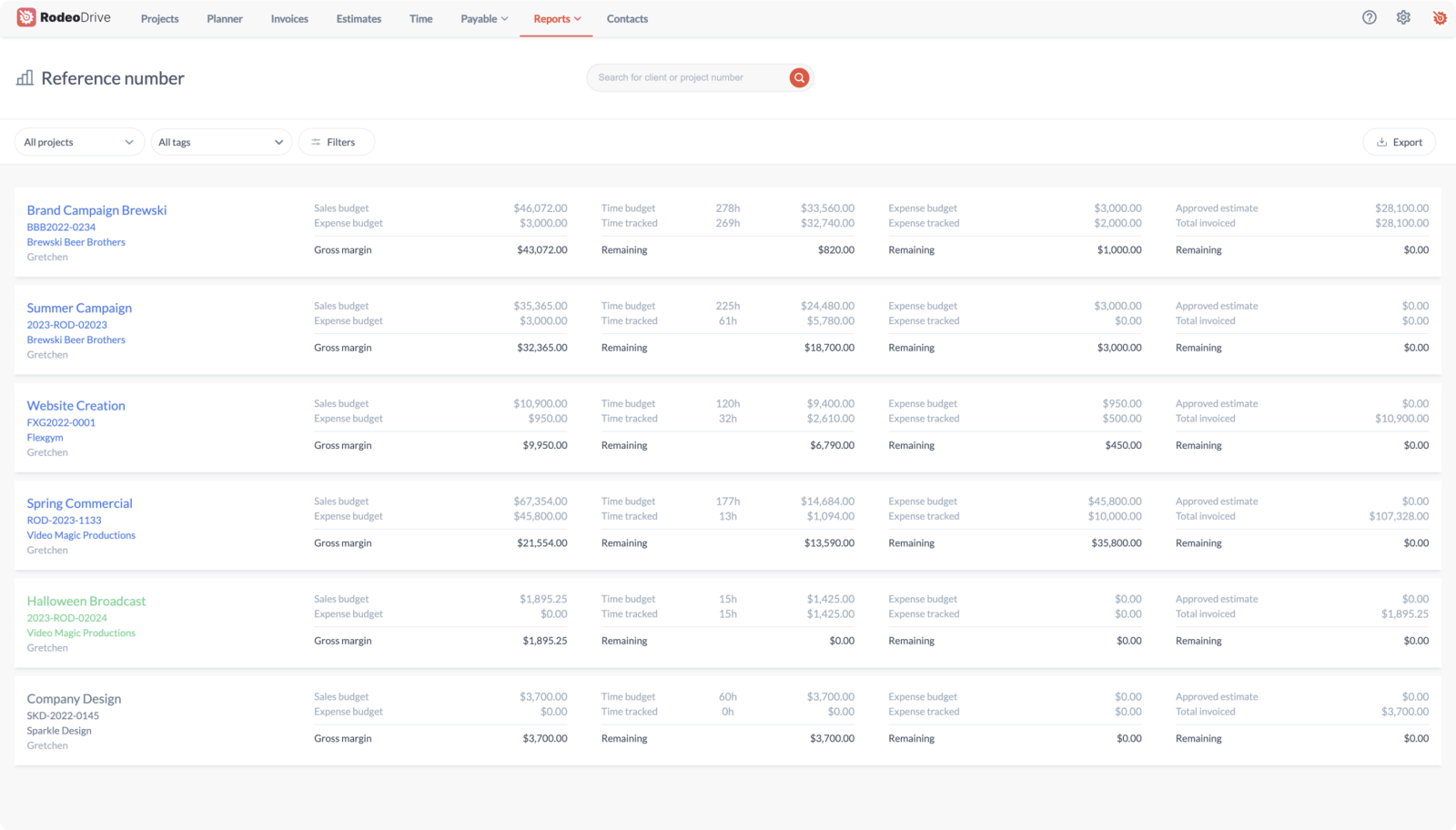
All of Rodeo Drive's features make cost management a breeze. Why not try it out and see for yourself? Take advantage of our free plan today.





